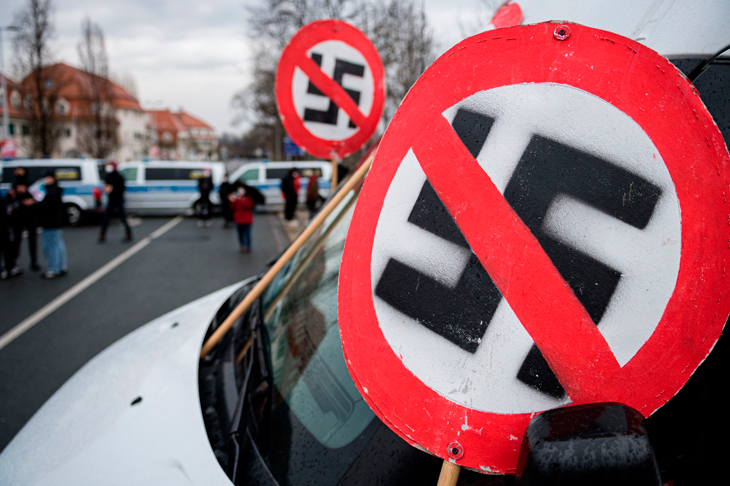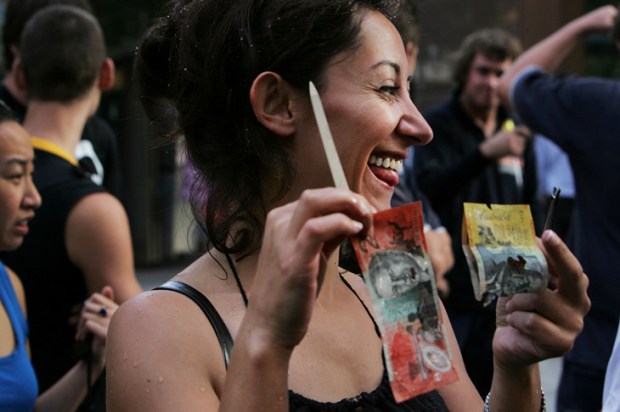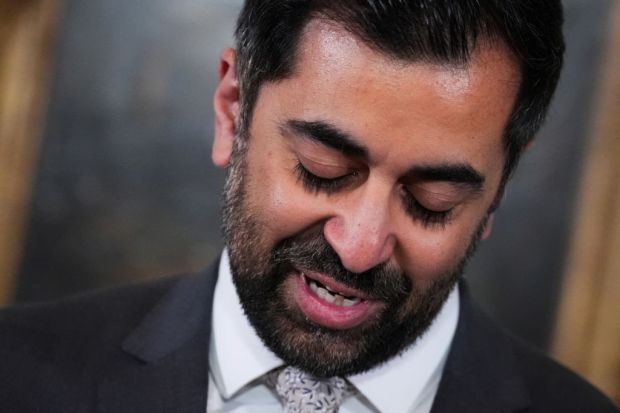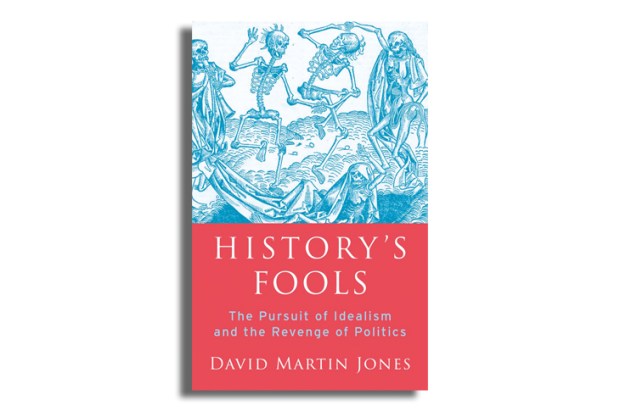Having experienced the warmth and openness of Victorians, the idea of the Garden State as a stomping ground for neo-Nazi efforts to establish a Fourth Reich Down Under seems bizarre. Yet, Victoria is set to enact a law banning the public display of Nazi swastikas ‘to stamp out hate’, in the words of Attorney-General Jaclyn Symes. Symes is right that displaying the swastika ‘glorifies one of the most hateful ideologies in history’ and may cause ‘pain and division’. But Symes and the law’s supporters are wrong to think that banning Nazi symbols is a sign of democracy´s triumph over hatred and totalitarianism. A closer look at the history of free speech suggests that the law may well do more to undermine than strengthen the democratic values of freedom and equal dignity that it seeks to protect.
The belief that by banning Nazi ideas and symbols one can effectively oppose Nazism is based on the so-called ‘Weimar fallacy’. It argues that since the Nazis took advantage of free speech to undermine the state, democracies must suppress totalitarian movements before it’s too late. But as George Orwell warned, ‘if you encourage totalitarian methods, the time may come when they will be used against you instead of for you’. The censorship policies of Germany´s Weimar Republic (1918-1933) are a case in point. Nazis were frequently censored and punished for their extremist rhetoric. The Weimar Republic also censored radio broadcasts and used draconian emergency laws to curb the press.
These measures were intended to protect democracy, but once in power the Nazis used and expanded them to abolish democracy and persecute their enemies. Jewish and left-wing newspapers were banned and ultimately the Weimar Constitution’s emergency clause was used to suspend free speech altogether.
Among democracies America is an outlier when it comes to protecting hateful speech. But this was not always the case, and America too has seen attempts to combat Nazism metastasise into wider crackdowns on political dissent and pluralism. In 1938 the House Un-American Activities Committee was formed to investigate Nazi activities. But HUAC quickly became the main vehicle of ‘McCarthyism’, named after the Republican Senator Joseph McCarthy, who spearheaded a paranoid political witch-hunt determined to sniff out communists – real and imagined – in Hollywood and the government.
Communists may have been the victims of political intolerance during America’s Red Scare, but in the USSR, Stalin took the fight against ‘hatred’ and ‘fascism’ to extremes in order to legitimise his brutal crackdowns on dissent.
Article 123 of the Stalin Constitution of 1936 was meant to ensure the equality of all citizens of the USSR and stated that ‘any advocacy of racial or national exclusiveness or hatred and contempt, is punishable by law’. After the end of World War II, the USSR and its allies pushed for a prohibition against hate speech, similar to that of the Soviet Constitution, in the United Nation’s International Covenant on Civil and Political Rights (ICCPR), a legally binding treaty protecting basic human rights. According to the Soviets, repression was necessary since ‘millions had perished because the propaganda of racial and national superiority, hatred and contempt, had not been stopped in time’.
The Soviet Bloc’s determination on prohibiting incitement to hatred was resisted by all Western democracies. The American Chair of the Commission on Human rights, Eleanor Roosevelt warned that the Soviet proposal would allow governments ‘to punish all criticisms in the name of protection against religious or national hostility’ and warned the commission ‘not to include… any provision likely to be exploited by totalitarian States for the purpose of rendering the other articles null and void’. Australia’s delegate at the UN was a Victorian, former crown solicitor Fred Whitlam, an enthusiastic champion of international human rights who ‘loathed any form of prejudice on grounds of class, religion or race’.
In 1953 Fred Whitlam echoed Roosevelt’s sentiments and forcefully rejected the Soviet Bloc’s idea of combating fascist ideas through repression since, ‘It was axiomatic that in Australia people could not be legislated into morality. To be effective, legislation of the kind proposed would inevitably involve censorship and repressive police action – a system utterly abhorrent to the Australian way of life’.
Against the votes of all Western democracies – including Australia – the ICCPR was adopted with Article 20(2), which, states that ‘Any advocacy of national, racial or religious hatred that constitutes incitement to discrimination, hostility or violence shall be prohibited by law’.
The warnings of Fred Whitlam and Eleanor Roosevelt were prescient. As they had prophesised, Communist states exploited laws against incitement to hatred in order to punish dissidents. Moreover, the Soviet Constitution’s injunction against racial hatred did nothing to protect against incitement to hatred stemming from the very top. In November 1952, Stalin claimed that ‘every Jew is a nationalist and an agent of American intelligence’. This culminated in the so-called Doctors’ Plot, in which a group of doctors – most of whom were Jewish – were accused of planning to cause the death of leading Soviet officials.
Victoria´s ban against Nazi symbols is unlikely to result in as cataclysmic outcomes as in Weimar Germany or Stalinist USSR. Still, there are reasons to believe that the unintended consequences will lead to arbitrariness and ‘scope creep’ targetting ever more symbols of hate and division. In Germany courts have made contradictory rulings on when and how Nazi symbols can be displayed. In 2015 a German blogger was convicted for posting an image of Nazi leader Heinrich Himmler in a Nazi uniform even though the blog post was a protest against alleged racism against the blogger´s mixed-race daughter.
Establishing the precedent that symbols of hatred should not be tolerated, Victoria’s government is also likely to face growing demands that the index of prohibited symbols be expanded. Why not ban Communist symbols, given the totalitarian oppression in Communist states and the devastating consequences for millions of ‘enemies of the people’ who were shot, sent to gulags or starved to death during forced collectivisation? And what about symbols associated with Islamists, Hindu extremists, or apartheid South Africa?
The government of Victoria would be wise to heed the warnings of Fred Whitlam, who understood that democracy is endangered, not enhanced, when free speech is circumscribed.
Got something to add? Join the discussion and comment below.
Get 10 issues for just $10
Subscribe to The Spectator Australia today for the next 10 magazine issues, plus full online access, for just $10.
You might disagree with half of it, but you’ll enjoy reading all of it. Try your first month for free, then just $2 a week for the remainder of your first year.














Comments
Don't miss out
Join the conversation with other Spectator Australia readers. Subscribe to leave a comment.
SUBSCRIBEAlready a subscriber? Log in